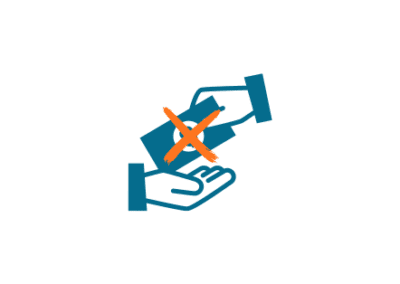What is a Workforce Optimization System?
A Workforce Optimization system is a business system that combines practices to improve your employee and organizational efficiency. As well as that, it decreases your operational costs by using data and technology.
Let us emphasize!
You know that old saying, “Work smarter, not harder”? It’s been beaten into the ground, but let’s be real—it’s the mantra Workforce Optimization Systems (WOS) live by. Now, you might be worried are we about to bore you with old macroeconomic theories?
Because economics isn’t just about dusty textbooks; it’s about people. Your workforce is the lifeblood of your organization, and like a nation’s economy, it thrives or flounders based on how resources (people, time, technology) are allocated.
WOS and the Balancing Act: Economies and Diseconomies of Scale
In economics, there’s this sweet spot called economies of scale, where producing more actually costs less. Hire just enough employees, equip them with the right tools, and voilà—you’re a model of efficiency.
But add too many people, and bam—you’ve hit diseconomies of scale. Suddenly, costs skyrocket, communication breaks down, and productivity tanks. Sound familiar?
That’s where WOS steps in. Think of it as your organization’s Keynesian economic advisor, telling you how to balance labor (your biggest expense) with efficiency to meet rising customer expectations. Keynesian theory emphasizes the role of labor in driving output and growth. Likewise, WOS ensures that your labor force—the engine of your organization—is firing on all cylinders, not guzzling fuel with no results.
An Example: F1 Racing Meets Workforce Optimization
Let’s zoom into Formula One for a second.
On the surface, every team has similar cars and setups. But the champions? They’re the ones who’ve optimized everything—drivers, pit crews, engineers, aerodynamics. A 2-second pit stop isn’t luck; it’s precision and optimization.
Workforce Optimization Systems do the same for your organization. They don’t just schedule employees; they fine-tune every department, from marketing to finance, ensuring they work in harmony.
Imagine running a retail chain. Without WOS, you might hire extra staff during the holidays, only to learn later you didn’t need half of them, or worse, you understaffed key stores. With WOS, data-driven insights ensure you schedule just the right number of employees where and when they’re needed. No waste, no burnout—just seamless operations.
Why WOS Matters in a Hybrid World
Fast forward to today’s hybrid work environment. The challenge isn’t just about managing schedules—it’s about redefining productivity. The Keynesian model tells us labor is key, but in this new world, so is flexibility.
WOS ensures your employees have what they need—autonomy, balance, and clarity—to thrive. And when employees thrive, your business thrives.
Data: The Backbone of WOS
Now, let’s talk numbers (don’t worry, I’ll keep it snappy). WOS runs on data—tons of it. Think:
- Net Promoter Scores (NPS) to gauge customer satisfaction.
- Employee performance metrics to identify strengths and gaps.
- Operational costs to keep your bottom line happy.
But raw data isn’t enough. WOS analyzes it, giving you actionable insights.
Picture this: Instead of scrambling to solve customer complaints, WOS lets you predict them. Instead of guessing which department needs more resources, WOS shows you exactly where to invest. It’s like having an economist, strategist, and HR guru rolled into one.
Why Are we Telling You This?
Because whether you’re running a contact center, a retail store, or a logistics hub, WOS isn’t just a tool—it’s a mindset. It’s about doing more with less, not by cutting corners, but by optimizing what you’ve got. So, if you’ve been feeling like your workforce is more chaos than Keynes, maybe it’s time to rethink your approach. After all, even the strongest economies need fine-tuning to reach their potential.
What are the Benefits of a Workforce Optimization System?
Reduced operational costs
As mentioned, a Workforce Optimization system can help to decrease your organization’s costs by reducing the amount of money spent in areas like unnecessary overtime and overstaffing. Workforce Optimization systems allow you to automate parts of your business. For example, labor is a huge expense for businesses and by developing your workforce you can control the costs associated with it. Automating your processes means the software does the work for you and can save you up to 95% in scheduling time. What’s not to like?
Improves efficiency
A Workforce Optimization system guarantees you have the right number of employees in the right places. It gives you an inclusive picture of how your organization is staffed and what departments need more resources. This helps you to plan ahead for those busy business periods.
Increases productivity

A Workforce Optimization system enhances communication between your departments and as a result, allows your teams to work well with one another. It also uses technology to analyze your team’s operations so you are kept in the know of how your employees are working.
Improves customer service and retention
Happy customers will ensure the business keeps flowing. An aligned workforce with a common goal of keeping customers happy will improve your customer satisfaction. There are dedicated workers responsible for customer service and customers never have to wait long for a response.
Keeps your company on top of the latest technologies
Keeping up with technological advancements is key to longevity in business. A Workforce Optimization system makes certain you are aware of what is happening within your business at all times. It has effective forecasting capabilities meaning you can accurately budget for large business expenses such as new technology or labor.
How can you implement a Workforce Optimization System?
Workforce Optimization systems involve analyzing data related to every department within your business. Then you must streamline those departments to improve the way your company runs. So, how do you execute it?
Use a Scheduling Software for your workforce optimization system

One way to optimize your workforce is through your scheduling software. This is software that tracks employee attendance and uses data to create schedules. Not only will this save time for your payroll team it is also great to help manage other areas such as unnecessary overtime.
Take, for example, one of our customers In-Home Health Care Services, who implemented our scheduling software and saw massive benefits including saving 20 hours of scheduling time. Before having an employee scheduling system they were manually pulling attendance from time-sheets and spending lots of time factoring in holiday pay and overtime. Not only did Celayix give them the exact attendance record from employees but we also simplified the entire billing process for them! As a result, they could bring payroll in-house and cut the amount of work they were doing in half. Saving approximately $25,000 in accounting costs per year! To read more on Celayix customers who have benefited from Workforce Optimization see here.
Time and Attendance
Time and Attendance software will also ensure you know what is happening amongst your employees at all times. You can track their start and finish times, prevent buddy punching and ensure they are on-site with geofencing technology. As a result of having this technology in place, you can plan ahead for when busy periods are coming up. Optimizing your workforce can look like giving your team the ability to schedule their own shifts with self-scheduling options. This will save up time which can be given to other areas of the business. Time and Attendance tools like Celayix can save you up to a massive 95% in creating schedules.
Performance Management
Workforce Optimization Systems (WOS) play a crucial role in performance management by ensuring that teams are operating at their best. These systems analyze employee performance, track productivity, and help you identify areas for improvement. Tools like Celayix enable managers to assign tasks, set clear goals, and monitor completion, ensuring every shift is optimized. By aligning the workforce with your business objectives, you not only enhance productivity but also foster a sense of ownership and accountability among your employees.
However, adopting WOS can come with some common hurdles, including change management, initial setup costs, and integration with existing systems. These challenges can feel daunting, but they’re not insurmountable. First, it’s important to involve key stakeholders early in the process, ensuring everyone is on board with the changes. To mitigate initial setup costs, consider phased implementation, starting with the most critical areas and gradually expanding. Integration is often the trickiest part, but modern WOS solutions like Celayix are designed to seamlessly connect with existing platforms, making the transition smoother. By planning ahead and leveraging expert support, businesses can overcome these hurdles and successfully adopt a system that drives long-term success.
As Max Verstappen might say after a seamless victory, “Simply wonderful.” And with a solution like Celayix in your corner, the race to workforce excellence just got a whole lot smoother.
Want to learn how Workforce Optimization can save your company thousands? Request a demo of Celayix’s scheduling software today and see how we can streamline your processes.




